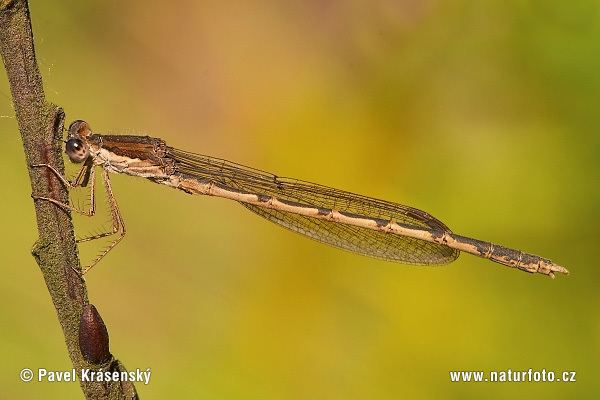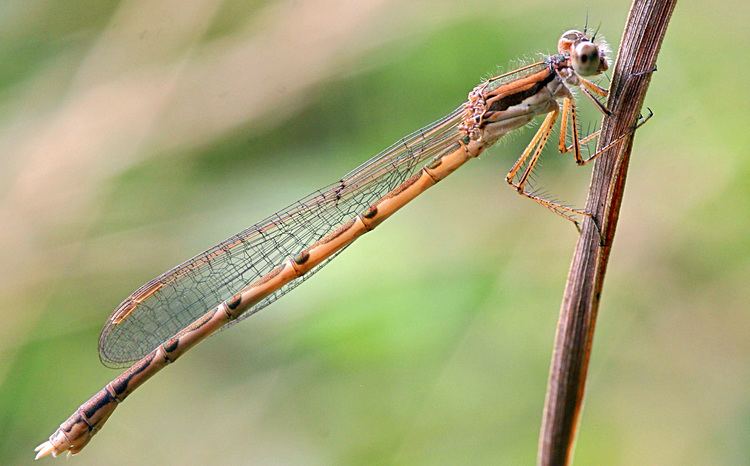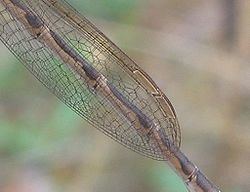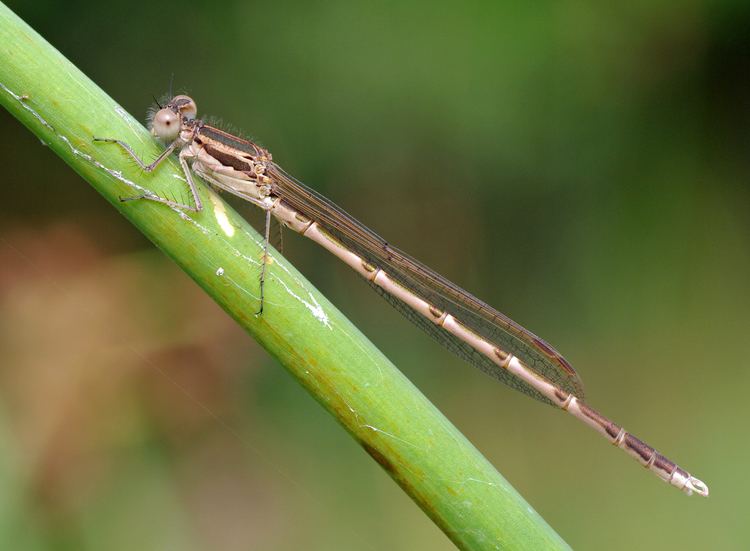Suborder Zygoptera Genus Sympecma Order Odonate | Scientific name Sympecma fusca Rank Species | |
 | ||
Similar Sympecma, Odonate, Lestes virens, Lestes barbarus, Chalcolestes viridis | ||
Damselfly orgy sympecma fusca
Sympecma fusca, the common winter damselfly, is a damselfly that is found in much of central and southern Europe. It does not have the bright blue or red colouration that is more usual for damselflies so it is often overlooked. It is one of only two species of European dragonflies that overwinter as adult insects, the other being the related S. paedisca. It is a member of the Lestidae and related to the emeralds or spreadwings.
Contents
- Damselfly orgy sympecma fusca
- Vrouwtje bruine winterjuffer sympecma fusca op buddleja
- Description
- Behaviour
- Habitat and distribution
- References

Vrouwtje bruine winterjuffer sympecma fusca op buddleja
Description

Although related to the Lestes 'spreadwing' damselflies, Sympecma rest with their wings alongside their bodies and do not have the metallic emerald green sheen that is characteristic of the Lestes. Sympecma have pale brown pterostigma on both forewing and hindwing and the pterostigma are nearer the wing tip on the forewing which means that both pterostigma can be seen — they do not overlap as in other damselflies. In the field this is easily seen and distinguishes Sympecma from all other damselflies. Males that have overwintered have dark brown pterostigma on both forewing and hindwing and many develop blue eyes. S. fusca is a nondescript damselfly that blends in with the dried grass stalks in which it overwinters but it is distinct from all other European damselflies except S. paedisca, so in most of its range there are no problems with identification. Where both S. fusca and S. paedisca fly together careful examination of the adult, in the hand, preferably under magnification, is required to tell the two species apart. In the male the anal appendages are slightly different and there are subtle differences in the markings on the thorax in both sexes.
Behaviour

This species is found all year round as it overwinter as an adult. In spring they mates and with the pairs still in tandem, the females oviposit in floating vegetation. Most reproductive behaviour occurs in April and May. The eggs hatch and the larvae develop rapidly in about 2 months. When the adults emerge they move away from water, often to heath or grassland a long distance from water, where they overwinter hidden amongst dried plant stems.
Habitat and distribution

It is found much of central Europe stretching out to Asia where it is replaced by S. paedisca. It is found around the Mediterranean in Europe and North Africa and on many Mediterranean islands. It can be found in all types of standing water. In winter adults are found away from water on dry plant stems usually in open areas such as grassland and heaths. It was recorded for the first time in Britain in 2008.


